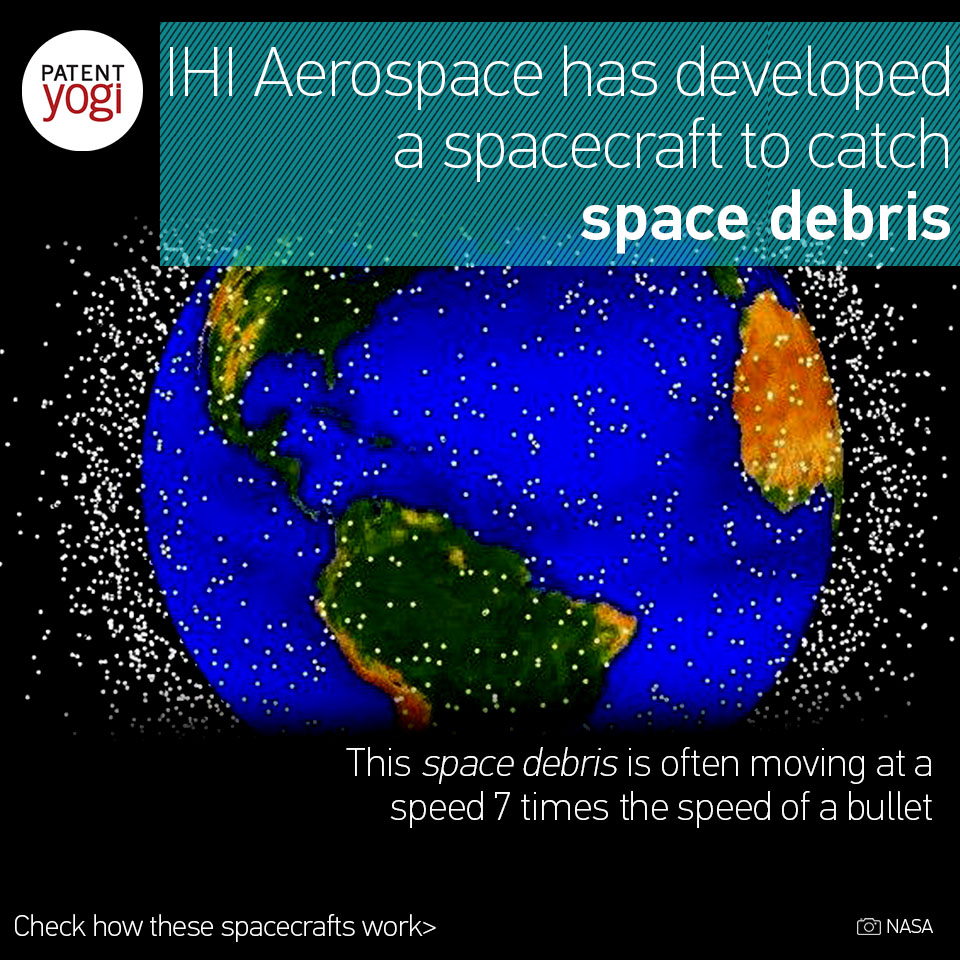Currently, a huge number of satellites are orbiting the earth. When the satellites fail and become non-functional or end their duty and reach the end of their service life, the satellites are often left in orbit as they are and become space debris. Also, wreckage of a rocket or the like used for launching a satellite or the like is also left in orbit as space debris.
There are over 500,000 pieces of debris orbiting the Earth. They travel at speeds up to 18,000 mph. This is about seven times faster than a bullet. Since it is moving so quickly, a tiny piece of orbital debris can cause a lot of damage.
Further, a phase of self-reproduction has started now, in which the number of pieces is increased by natural collisions. In order to stop the self-reproduction of the space debris, at least about 5 pieces of space debris need to be removed yearly. Space debris is attracted by terrestrial gravitation, and falls and disappears eventually, however, a gravity fall requires many years and it is not efficient. Therefore, IHI Aerospace has developed a space debris removing spacecraft for positively removing space debris.

The space debris is generally orbiting while undergoing an irregular rotating motion (tumbling motion). This makes it difficult to remove the debris.
The space debris removing spacecraft propels itself to approach and control attitude to target debris which is the space debris to be removed. Further, it includes a capture device (such as harpoon), which is ejected toward the target debris. A wire connects the harpoon with the space debris removing spacecraft. The spacecraft first observes motion of the target debris and calculates a capture position and a capture attitude at which the harpoon can be driven into a hollow portion of the target debris. Once the harpoon latches onto the target debris, it is decelerated.
The advantage of using the harpoon is that it can be driven from a position away from the target debris, and even when the target debris is undergoing the tumbling motion, the target debris can be captured in the state that the space debris removing spacecraft and the target debris do not collide.
NASA has also developed and patented spacecrafts to capture space debris. Please check our video below to see how NASA’s spacecraft works. The video uses the famous space debris “Black Knight” as an example.
Publication number: US 9,463,884
Patent Title: Space debris removing device and space debris removing method
Publication date: 11 Oct 2016
Filing date: 1 Nov 2012
Inventors: Yukihito Kitazawa; Aritsune Kawabe; Kozue Hashimoto; Mitsuharu Sonehara; Masaru Uji; Shinya Morita; Katsuaki Nomura; Ayumi Nakan
Original Assignee: IHI CORPORATION

